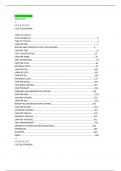Summary
Summary COST ACCOUNTING CPA
- Module
- Institution
Table of Contents Acknowledgment......................................................................................................................iii Table of Contents.......................................................................................................................v CHAP...
[Show more]



